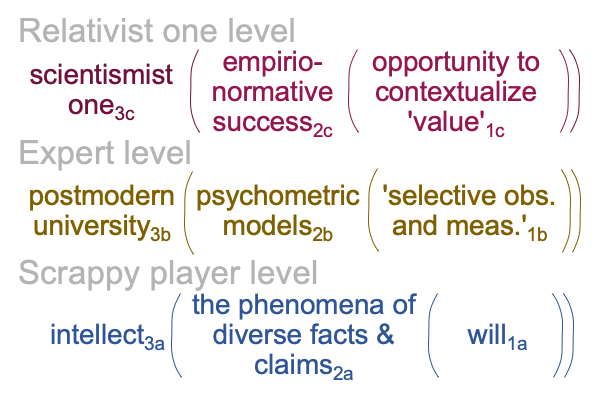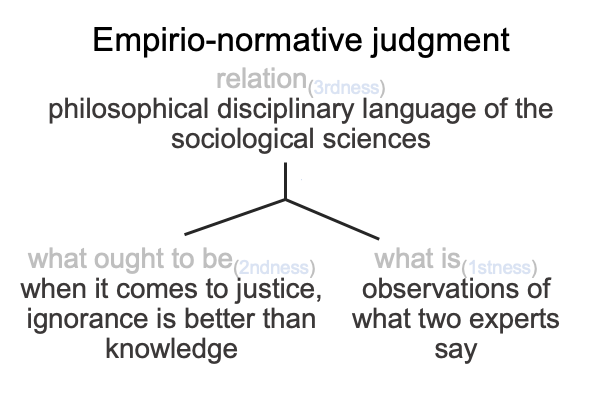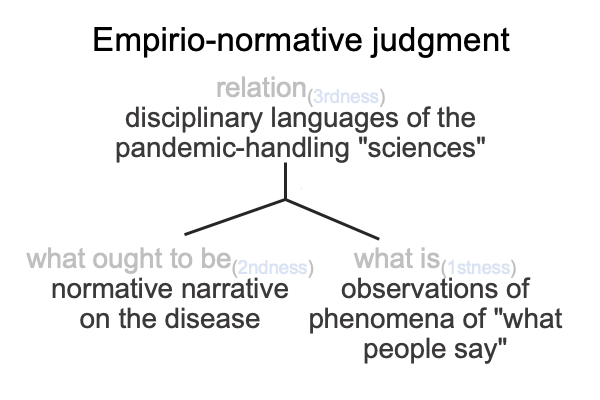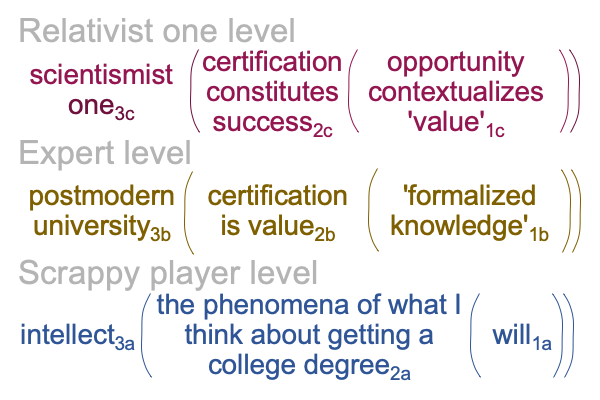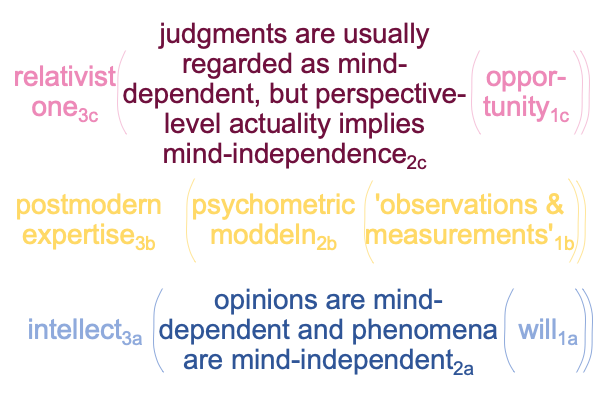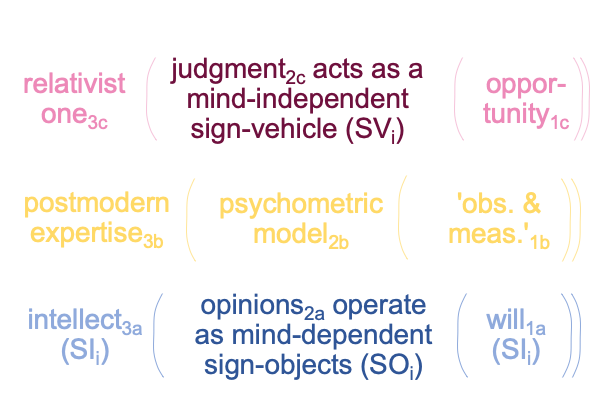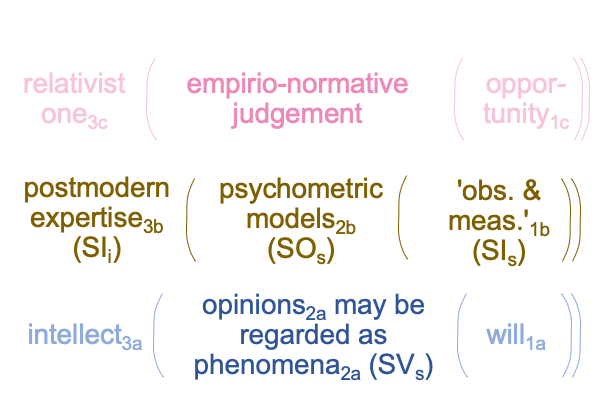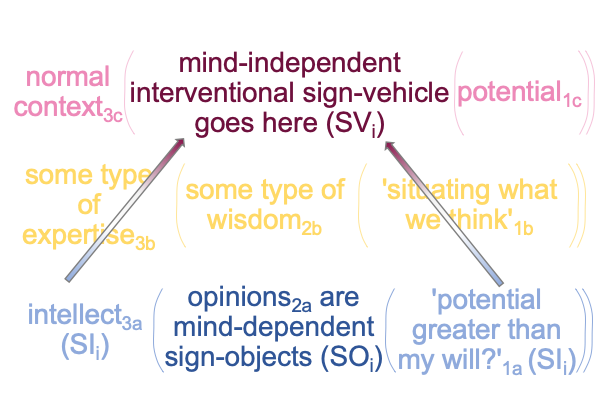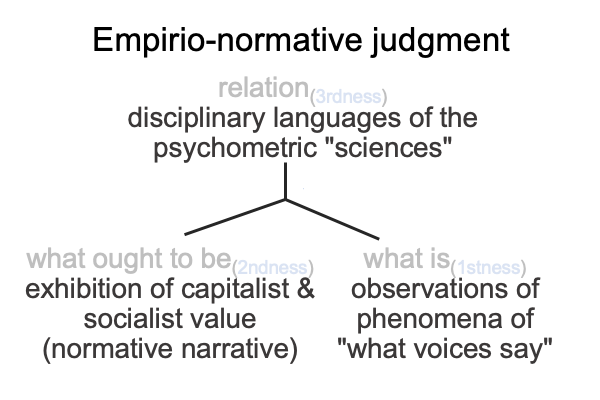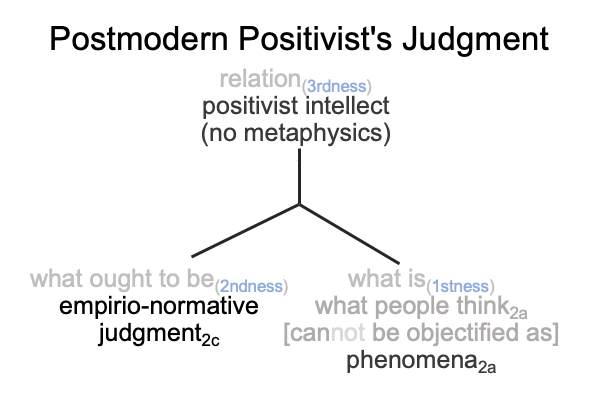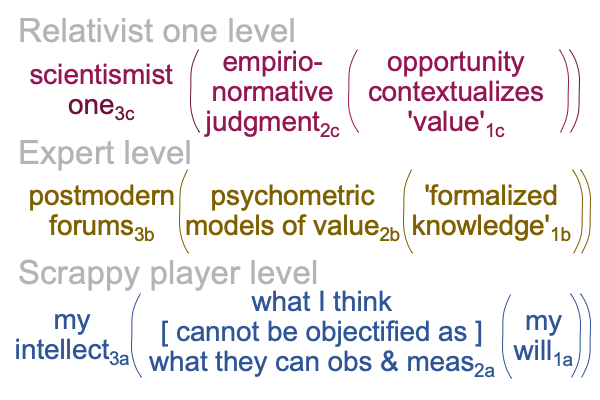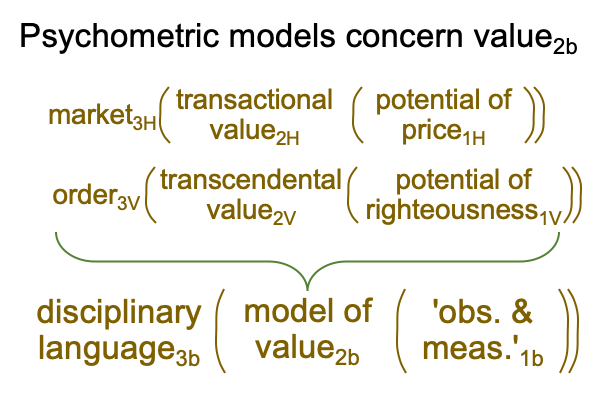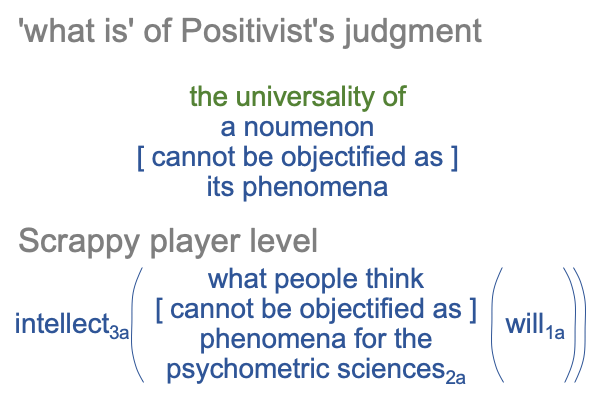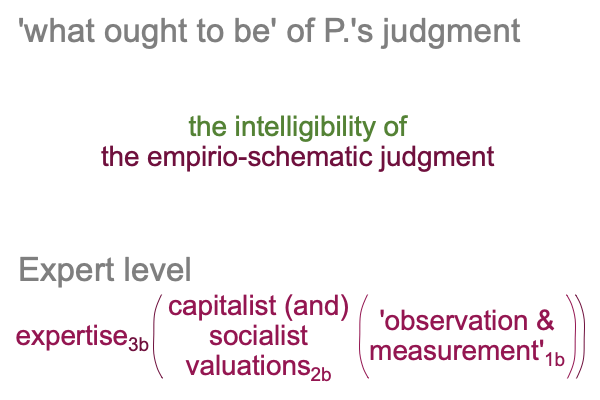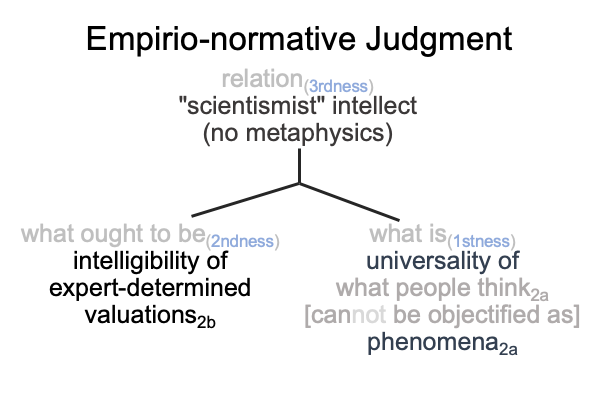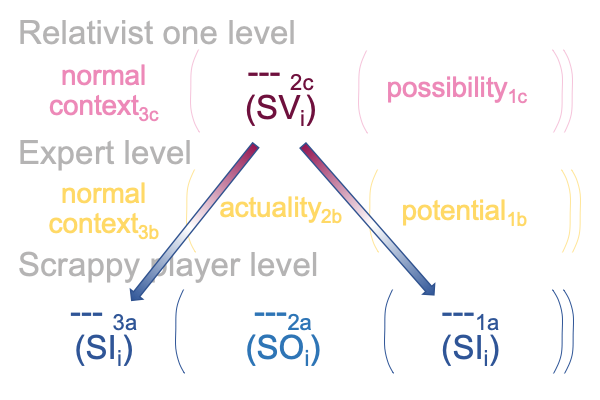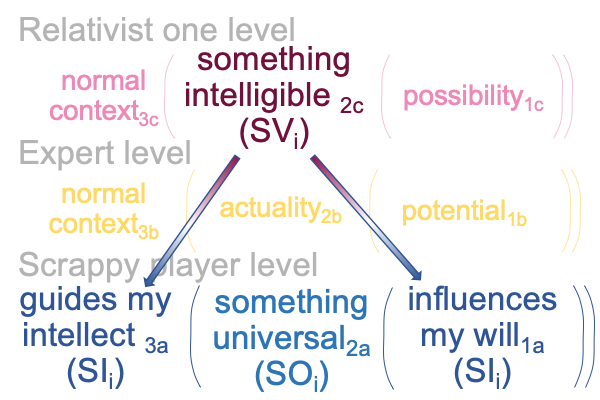Looking at Steve Fuller’s Book (2020) “A Player’s Guide to the Post-Truth Condition” (Part 14 of 26)
0132 In chapter eight, Fuller asks, “Will expertise survive?”
It depends on whether the current enlightenment god wins.
0133 To me, it is for Fuller to tell of the historical rise of expertise, as the appearance of an expert-level following the adoption of mechanical philosophies by northern Europe in the 1600s. The sloganization of the Positivist’s judgmentfollows Immanuel Kant (1704-1804 AD) and occurs in the 1800s.
Here is a diagram of the Positivist’s judgment.

0134 The positivist intellect (relation, thirdness) brings the empirio-schematic judgment (what ought to be, secondness) into relation with phenomena, observable and measurable facets of their noumenon (what is, firstness).
In the empirio-schematic judgment, disciplinary language (relation, thirdness) brings mathematical and mechanical models (what ought to be, secondness) into relation with observations and measurements of phenomena (what is,firstness).
0135 The professionalization of expertise tracks right alongside the ascent of the Positivist’s judgment, especially in regards to the structure of the university in the West. The normal context of an educational institution3b brings the actuality of professional credentials2b into relation with the possibility of ‘formalizing knowledge’1b.
Positivist educational institutions3b are not put into perspective by transcendentals, such as truth3c, justice3c, beauty3c and other features of righteousness3c. Rather, they3b are put into perspective by a relativist one3c.
0136 Here is a picture.

I hope this looks familiar.
0137 Recall, at the start of Fuller’s effort, the reader is told that relativism makes sense for someone outside of all relativized jurisdictions. One3c must be outside of all jurisdictions in order to… um… judge them as a system of differences3b. In this regard, there is a divine sort of absolutism3c that accompanies relativism3b. Does that make the relativist one3c divine? Does that make the one that occupies the perspective-level normal context into an enlightenment god?
0138 Say what?
For example, consider the two divine singularities that confront one another during the Third Battle among the Enlightenment Gods: The Cold War Among Materialist Ideologies (1945 to 1989 AD).
0139 The first is the capitalist one. The capitalist one3c is explicitly abstracted over the course of the 1700s and the 1800s as the one who makes the assessment as to whether an organization is viable or not. Capital is like blood. It is neither living nor dead. Rather, it is undead. It flows through the conduits that keep an organization alive. And, that sounds both weird and morbid.
0140 Indeed, nineteenth century capitalist experts fixate on gold as the blood of finance. Mercantilist institutions seek to accrue gold. Gold is money. Mercantilists strive to preserve the flow of gold, as well as flows of low-priced commodities into and high-priced manufactured items out of the country. Mercantilists conduct transactions that keep their institutions alive. They are in the business of markets, values and prices. Each nation thinks that it can win in the capitalist system3c.
The mercantilist world ends through its hubris and internal contradictions, in the First Battle of the Enlightenment Gods: The Tragic Battle among Naive Mercantilist Ideologies (1914-1918).
0141 The second is the socialist one. The socialist one is explicitly abstracted over the course of the 1800s and 1900s as the one who puts the organization tier into perspective in terms of order and righteousness. Order is the potential underlying sovereign power. Righteousness is the potential underlying institutions.
Institutions are not the same as organizations. Institutions put organizations into perspective. See A Primer on How Institutions Think, by Razie Mah, available at smashwords and other e-book venues.
0142 The Second Battle of the Enlightenment Gods (1938-1945) starts as a fight between two socialist fraternal ideologies: fascism and communism.
0143 Fascism incubates from the fraternization of capitalist corporate dealers and state authorities. State politicians are eager to perform market interventions for their corporate buddies. Corporate expertise and political machinations go hand in glove. Fascist politicians formulate socialist ideologies that justify such fraternal relations in terms of the brotherhood of the titans of state and business, or the brotherhood of the experts, or the brotherhood of the people united in their ethnic identity…
….anything but the brotherhood of communists.
0144 In contrast, communism is formulated by Karl Marx (1818-1883) as a Hegelian synthesis to the thesis of feudalismand the antithesis of capitalism. Communism is adopted by reasonable people who want to be brothers in something,again.
In Christendom, people were brothers in Christ, which alienated Jews, even though Jesus the Christ is a Jew. The history, to say the least, is complicated.
Plus, after the start of the so-called “Western Enlightenment”, some people no longer want to belong to any Christian faction. The problem? “Not religious” Christians want to congregate. Alienated Jews no longer want to be alienated. So, an easy solution is to unite former Christians and secular Jews as brothers in communism. Communism provides order3b, value2b and righteousness1b. Plus, communism loves expertise. The Western Enlightenment loves experts. Communism thrives on socialist expertise.
0145 So, the Second Battle of the Enlightenment gods starts as fascism versus communism. Then, American capitalists are drawn into the fray, not as friends of fascism, but as enemies of fascism. Why? Americans do not comprehend the cronyism and the kookiness of fascist socialist ideologies and they don’t have the expertise to understand communist socialist ideologies. Plus, some Americans realize that they can make a lot of… you know… the undead blood of capitalism. And, other Americans start to believe that capital2c puts markets3b, value2b and prices1b into perspective.
So, the Second World War divides into fascism versus capitalism and fascism versus communism.
After four years of conflict, leaving millions dead, the winners turn out to be the brothers in capitalist USA and the brothers in communist USSR.
0146 Thus, the stage is set for the Third Battle of the Enlightenment Gods (1945-1989) as a war between capitalist (USA) and socialist (USSR) expertise.

0147 At the end of this battle, both ideologies are severely wounded, yet remain alive, ghostlike, within expertise itself.
The post-truth condition takes center stage in 1989, with the inauguration of the Fourth Battle of Enlightenment Gods.








